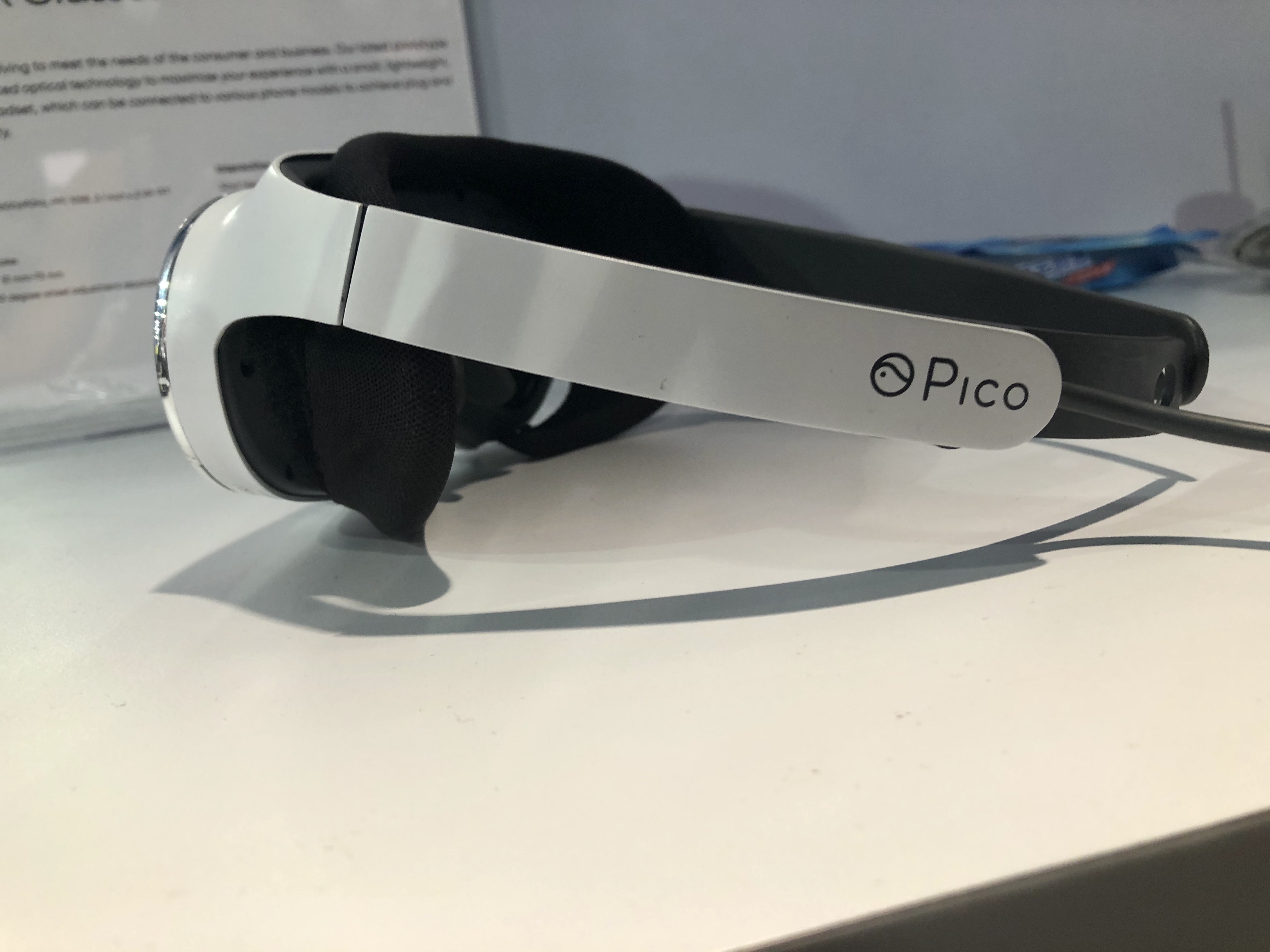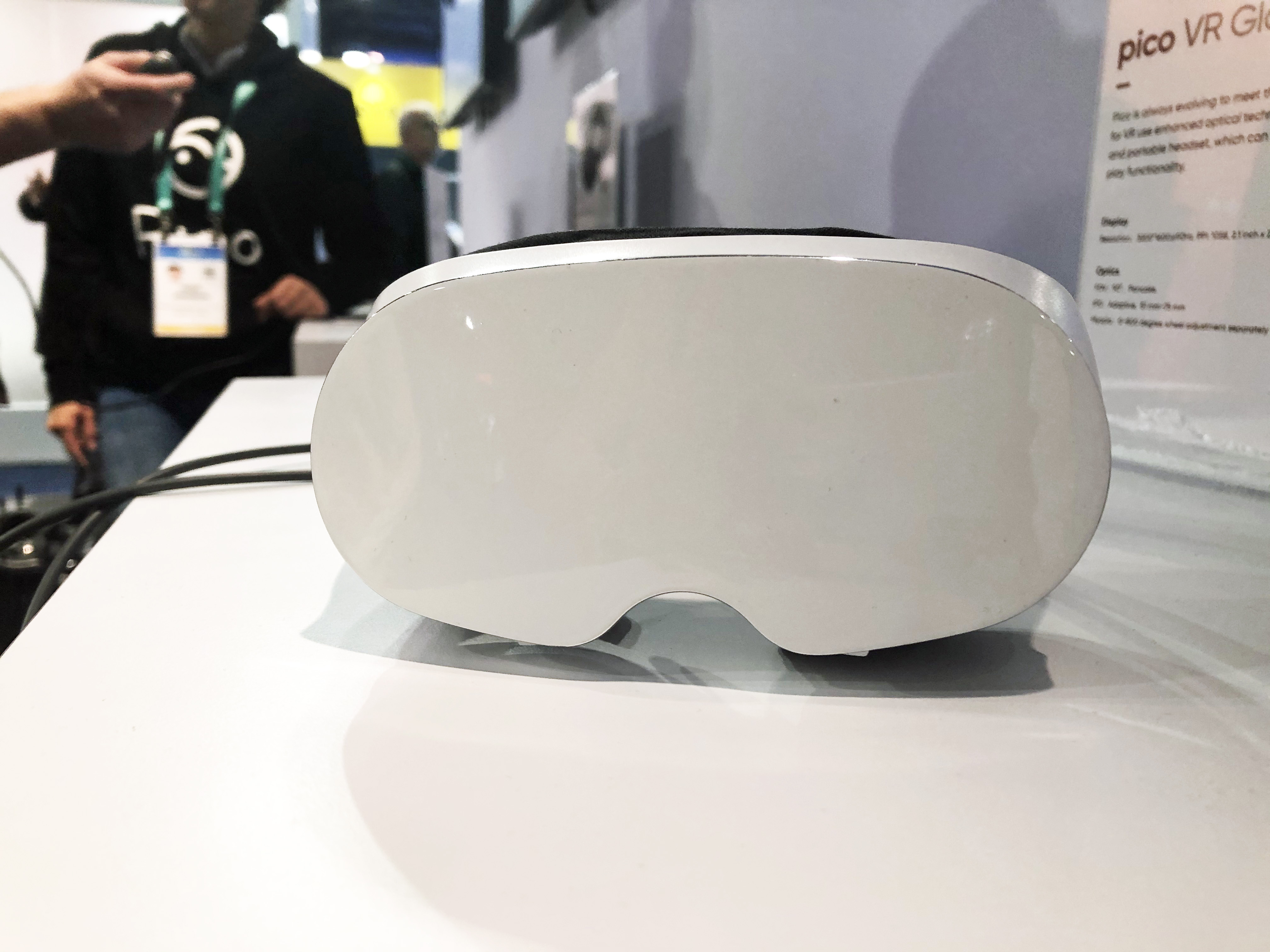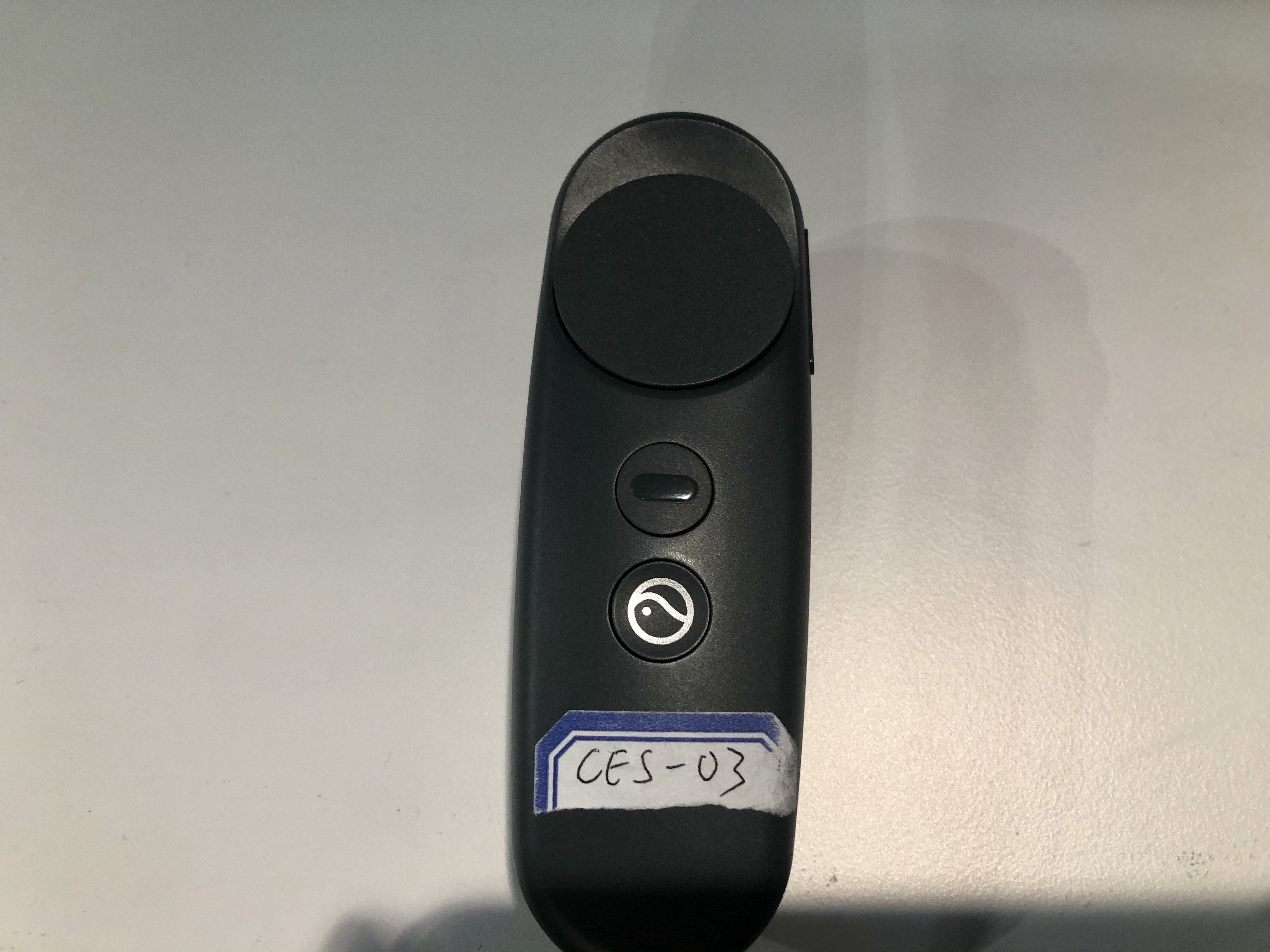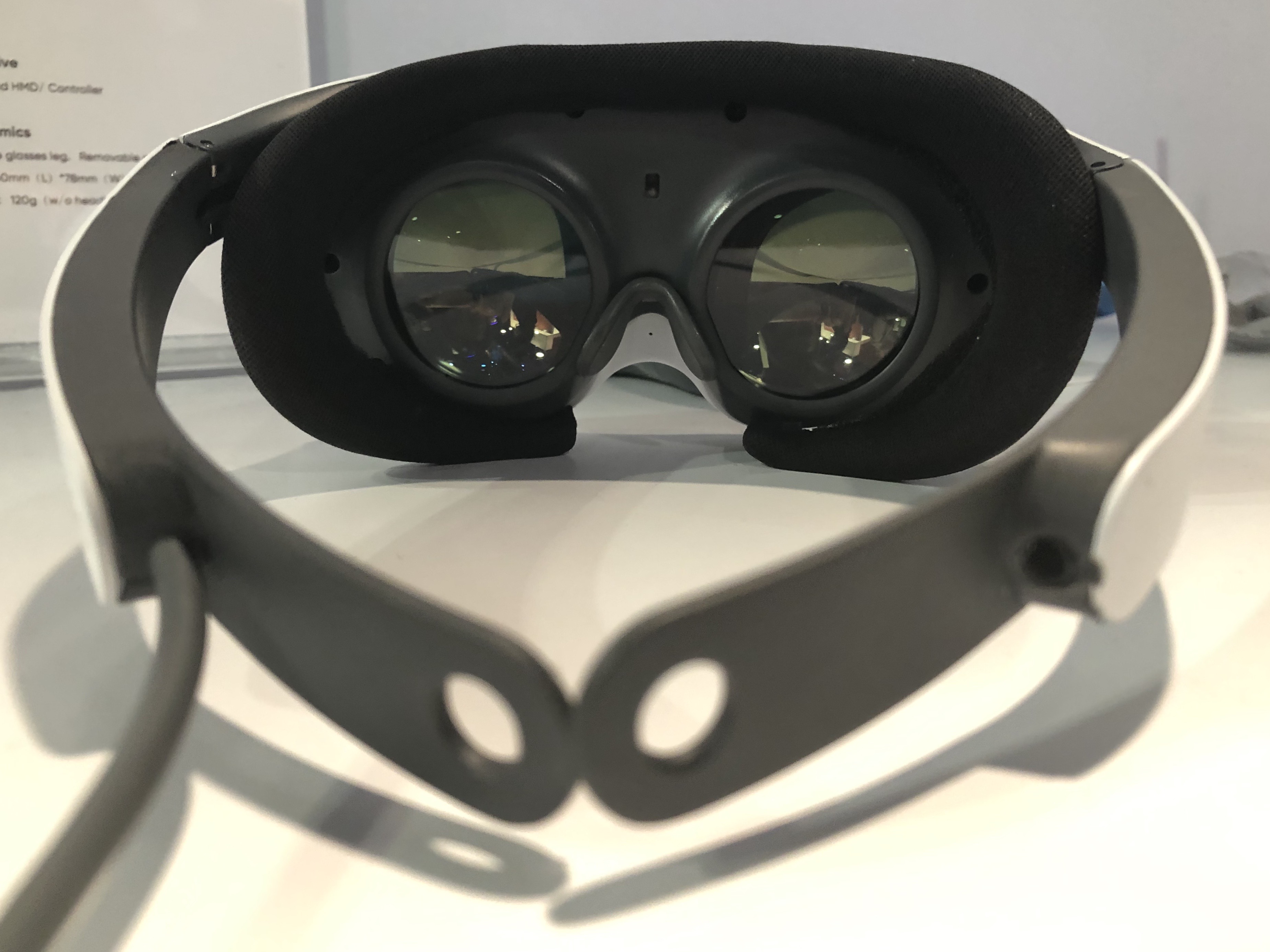Pico's VR Glasses May Be the Slickest VR Headset Ever
This could be the slickest VR headset ever offered to consumers, if you don't mind being connected to a smartphone.
It’s still an emerging market, but when it comes to virtual reality (VR) headsets for the home, the big dogs are already well established. For those seeking the most premium experience, PC-connected heavyweights like like the HTC Vive Pro come to mind, and for a range of options, including budget ones, Oculus has also made a name for itself. You probably haven’t heard of enterprise-focused Pico, but if it took a finalized version of its VR glasses prototype to consumers, it would seriously turn some heads.
Pico focuses on enterprise VR, because this is where the market’s seeing the most growth, a rep told us here at the CES tech show in Las Vegas. While it would sell its headset to an individual if they really wanted it, it’s mainly focused on selling to businesses, Pico told us that this also allows them to work more closely with partners on new applications.
At CES, it showed off a prototype of the Pico VR Glasses, expected to debut later this year, that are just what they sound like. They don't encase your entire skull in plastic, Velcro and adjustment dials. Instead, they just sit on your face like a regular pair of glasses. In the blink of an eye, I entered the world of VR without having to carefully mount a heavy piece of hardware to my head and make those fine adjustments to the lenses and various headset dials and ratchet clamps that you usually would have to. And I didn’t notice them sitting on my ears either.
Naturally, the VR Glasses are a fraction of the weight of something like the 16.5 ounce (468g) Oculus Go, which packs its computing components into the head-mounted display (HMD). The Pico prototype weighed just 4.2 ounces (119g). And, of course, it has a small footprint, measuring 6.3 x 3.1 x 1 inches (LxWxH). With its rubber arms and weight distribution, I never noticed it sliding or moving at all when in use.
Pico's VR Glasses do have to be tethered to a smartphone via USB-C, so an iPhone wouldn’t work. Some won't like that requirement, especially with standalone headsets like the budget Go ($149) not requiring a connection to anything at all. But the VR Glasses look and feel so good, that it’s almost worth it to just stick the phone in your pocket, where it may typically live anyway. When I played a game with the glasses, I never bumped into the USB cable connecting the two, and if you’re using the VR Glasses to watch something it’s even less troublesome.
The demo I played had me fire a crossbow against skeletons that were slowly creeping toward me. To shoot, I used the trigger on the headset’s sole controller, which also has a trackpad, middle button, home button and trigger. It kept up with me well, and I didn't feel like I was robbed of points during play. The prototype headset has 3-degrees of freedom, as does the controller. I was also able to navigate the menu pretty seamlessly.
The prototype uses two 2.1-inch TFT LCD panels with a 3200 x 1600 resolution (total) for a pixel density of 1,058 pixels per inch with a 90Hz refresh rate. Colors were strong, and I didn’t immediately notice any screen tearing or other jarring issues with the display. However, the thick, fabric cushion was visible in the 90-degree field of view at the tops and bottoms, even though I could ignore it sometimes. Additionally, there was some light leaking. These are some of the things Pico said it’s working on cleaning up, as well as using different materials for the face cushion, before releasing a final version.
Get Tom's Hardware's best news and in-depth reviews, straight to your inbox.
To keep the VR specs trim, Pico used pancake optics, which is like stacking multiple thin optical lenses atop one another. They also had to work to shorten the distance between the lens and the LCD panels.
Pico told me it doesn’t have the content to compete with Facebook, and with its business focus it’s not going to position this as a direct rival to something like the Oculus Go either.
Although consumer VR has gained more options with simpler set-ups that drop base stations and PC or smartphone connections, the VR Glasses’ tether could be an acceptable price to pay for the comfort and ease of an incredibly lightweight HMD.

Scharon Harding has over a decade of experience reporting on technology with a special affinity for gaming peripherals (especially monitors), laptops, and virtual reality. Previously, she covered business technology, including hardware, software, cyber security, cloud, and other IT happenings, at Channelnomics, with bylines at CRN UK.



